


The Tarot of Ideals



Bibliography and Links
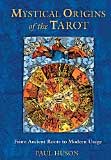
|
Mystical Origins of the Tarot: From Ancient Roots to Modern Usage
by Paul Huson. A revolutionary look at the origins of the cards. Huson presents evidence from a great deal of research into the origin of the trump cards as vivid imagery from the pageant carts that were drawn through the streets as part of medieval mystery, miracle, and morality plays, especially The Dance of Death. He also traces the suit images back to the Mamluk deck from fourteenth century Egypt, then to traditional represenations of the cardinal virtues: the mirror (or coin) of prudence, the sword of justice, the cup of temperance, and the rod of fortitude. The rich review of each card includes historical and literary references, imagery from a variety of decks, and cartomantic interpretations since the 1700’s.
As we shall see, all the evidence available today suggests that the trumps were added to an already existing geme of fifty-six playing cards during the middle of the fifteenth century and for their subject matter drew on imagery readily recognizable by the card players of the time. However, knowledge of that symbolism was quickly lost by the average card player, which allowed for regional changes to creep into the design of the cards as their use in gaming spread throughout Europe. Nonetheless, the archaic and suggestive imagery used in the trumps and court cards resonated with that part of people’s psyches from which dreams and visionary experience spring (designated by the pioneering psychologist Carl Gustav Jung as the unconscious mind).
|
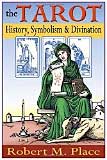
|
The Tarot: History, Symbolism, and Divination
by Robert Place. Another invaluable source for the original meanings and associations with the Tarot cards. Reviews the conventional occult interpretation of the cards, then steps back into a deeper Neoplatonic and Pythagorean search for meaning. A major focus is finding the identities of the trump cards in allegorical medieval literature such as I Trionfi by Petrarch. Then comes a detailed summary of the history behind the cards in general, and the Tarot of Marseilles in particular. Finally comes the largest single section of the book, an interpretation of the Waite-Smith deck.
Occultists have also invented systems that connect the Tarot to systems such as the Kabalah, the Hebrew alphabet, and astrology. Often their misconceptions lead one away from a true understanding of the actual imagery that is in the Tarot . . . . To understand what is in the Tarot, I feel that it is essential to examine its historic origin in the Italian Renaissance, to study the iconography and symbolism of that era, and to explore the relationship of that art to the ancient mystical philosophy that was revered by Renaissance artists and writers.
|
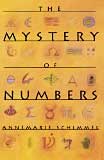
|
The Mystery of Numbers
by Annemarie Schimmel. The premise of this book is that since the dawn of civilization, “numbers are a reality having as it were a magnetic power-field around them.” It begins with a brief summary of ancient number systems and philosophies, going back to prehistory and people like the Maya. (I wish this section was longer.) Then comes “A Little Dictionary of Numbers,” detailed essays on the history, philosophical and religious significance, and use of most of the numbers through fifty, a selection of the rest through 100, and a handful up to 10,000. Almost half of the book is spent on the numbers one through ten. Did you know, if five bread crumbs are cast onto a table, and a cross can be formed by moving just one crumb, then a question raised while casting the crumbs will be answered affirmatively? More importantly, the number five is seen to be associated with man and life in general, and to embody an element of discomfort because of its geometric properties.
For a more detailed history of number systems worldwide, see
The Universal History of Numbers: From Prehistory to the Invention of the Computer by Georges Ifrah.
|
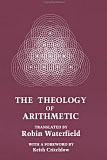
|
The Theology of Arithmetic
attributed to Iamblichus (c. 245 – c. 325 AD), a student of Porphyry, who was a student of Plotinus, the founder of Neoplatonism. Original source material for the numerology of the numbers one (the monad) through ten (the decad). Interpretation ranges from the religious to the literary and the scientific. For example: the dyad, for which 2 × 2 = 2 + 2, is said to occupy a position of balance between the monad, for which 1 × 1 is less than 1 + 1, and the other numbers, for which n × n is greater than n + n.
The dyad would be the mid-point between plurality, which is regarded as falling under the triad, and that which is opposed to plurality, which falls under the monad. Hence it simultaneously has the properties of both.
|
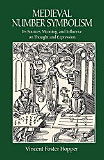
|
Medieval Number Symbolism: Its Sources, Meaning, and Influence on Thought and Expression
by Vincent Foster Hopper. Sounds like it would be helpful for understanding Tarot symbolism, and it does contain a lot of references and source material, but it doesn’t seem to contribute much to a consistent understanding of the meanings of numbers themselves. The chapter Medieval Number Philosophy, for example, gets off to a good start:
Philosophically, it was explicitly stated or implicitly recognized that number was at least one key, and an important one, to cosmic secrets. As in the writings of Philo and the various Gnostic theories, astrology and Pythagoreanism were combined in an attempt to define the cosmic pattern.
The number five, for example, is said to be associated with the cross, circles, pentagrams, its recurrence in multiplication, the letter E, the five senses, the Pentateuch, the five wounds of Jesus, the five vowels; and elsewhere, the five letters in the words soter (savior) and pater (father), the five loaves, and the feeding of the five thousand. But one is left wondering what its divinatory meaning is supposed to be, probably because this is not the author’s intent.
|
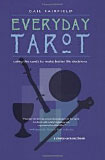
|
Everyday Tarot: A Choice Centered Book
by Gail Fairfield. Originally titled Choice Centered Tarot; followed by a sequel called
Choice Centered Relating and the Tarot.
An excellent description of what the Tarot is, how it works, and how it can be used. A major focus is that neither the future, nor the experience of the past, is fixed, and both are subject to the influence of our choices in the present. Interpretation is based on the underlying concepts of the suits, numbers, and characters; but the concepts as represented are very simple, almost to the point of being superficial, and often have little to do with the historical context. (For example, the Hanged Man is “hanging around” and represents timing or waiting.) Which is not to say that they cannot be useful; but I personally have tried to till a little deeper into the historical, cultural, and mathematical soil. Has several good chapters about designing and using spreads, with a list of basic layout elements on which to base a spread.
A few days before I read this book, I was cutting grass and for some reason having vivid memories about how my grandmother in Ohio used to use a rototiller in the garden. In the introduction to the book, Fairfield, who lives in the neighboring state of Indiana, uses a rototiller and a garden as examples of how to choose and use tools.
|
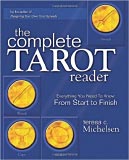
|
The Complete Tarot Reader: Everything You Need to Know from Start to Finish
by Teresa Michelsen. Possibly the most comprehensive source of information about intuitive interpretation of the cards based on the underlying principles of number, suit, and other structural aspects. The approach is extremely practical and didactic, and the reader is continually provided with exercises and study goals to encourage self-growth and learning by one’s own experiences with the cards. The information is not specific to any deck and multiple examples are provided, although the reader is encouraged to examine and interpret the details of his or her own deck. “Traditional” and “little white book” meanings are discouraged, and cards are considered neither inherently good nor bad. The practical aspects extend to advice about interacting with querents as well as tips for reading for oneself. Reversals are treated with particular detail, and plenty of options for interpretation are provided.
|
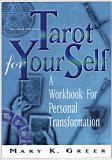
|
Tarot for Your Self: A Workbook for Personal Transformation
| first edition
by Mary K. Greer. A mixture of information and guidance about Tarot self-exploration, and workbook material in which the reader is encouraged to perform exercises and record personal observations and impresssions. Some of the information resonates with me more than others, which is of course the usual case; for example, one is advised to bury a deck in the earth to dispel negative energies. And even though the book is not tied to any one deck, and in fact includes examples from many decks, the interpretations lean toward the Waite-Smith concept of swords as bad cards. But there is also an emphasis on using the basic archetypal meanings of the suits, numbers, and characters. The chapters on Reading the Cards and the Court Card Personalities, and Appendix A, Interpreting the Cards, are “where it’s at.” For example, since wands represent creativity and self-development, and two represents duality and balance, the two of wands can represent personal power through synthesis of ideas, or the ability to make choices.
|
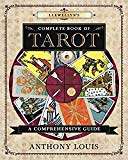
|
Llewellyn’s Complete Book of Tarot: A Comprehensive Guide
by Anthony Louis. “Comprehensive” is correct; includes the origins of the Tarot; multiple types of decks over the years, associations with psychology, numerology and astrology; and down-to-earth advice about why and how to use the Tarot and what it can do for you. “During the past half-century, fortune-telling with the cards has fallen out of favor and instead the deck has become a tool for brainstorming, idea clarification, and self-discovery.” The card interpretations are especially interesting, as they include notes from historical sources including Eteilla, S. L. MacGregor Mathers, A. E. Waite, Aleister Crowley, and the Golden Dawn.
|
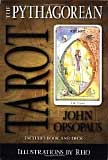
|
The Pythagorean Tarot
by John Opsopaus. A good introduction to Pythagorean philosophy, but also weaves in alchemy, qabalah, psychology, and other elements to make a new synthesis, complete with a deck consisting of allegorical imagery and an ancient Greek theme. The commentary on the card images includes valuable historical insights. And there is an interesting introduction to numbers as archetypes, and a summary of the meanings of the numbers one through ten.
|
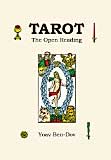
|
Tarot - the Open Reading
by Yoav Ben-Dov. The focus of this book is the reading of the pictures on the Tarot of Marseille in storyline fashion, the way other books do for the Waite-Smith deck. But it also includes background information about the Tarot in general and the cards in particular, and a brief summary of the meanings of numbers.
|
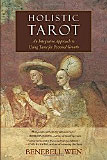
|
Holistic Tarot: An Integrative Approach to Using Tarot for Personal Growth
by Benebell Wen. It is impossible for a short paragraph to do justice to this 874-page book. Wen presents the Tarot as “a holistic tool that can help us mine our own unconscious to find answers,” and offers several potential mechanisms for its operation including synchronicity, apophenia, and projection. Most of the interpretation is based on the imagery in the Rider-Waite-Smith deck, with heavy emphasis on esoteric ideologies such as astrology and the Golden Dawn. Includes a great deal of practical, down-to-earth advice for the aspiring reader including step-by-step descriptions of all aspects of the reading process, journaling, ethical and legal issues, and copious case studies. Very briefly describes the process of interpreting the minor arcana of the Tarot of Marseille, unfortunately with little elaboration: “A modern approach to tarot analytics with the deck is to combine numerology with the elemental dignities associated with the four suits.”
When reading with the Tarot de Marseille, the practitioner will search within for imagery and symbols that come to mind based on the number and suit of the cards. A strong innate connection with the cosmic qi or collective unconscious becomes indispensable. Tarot novices may not have acquired or fine-tuned that connection yet, rendering it a challenge to learn tarot with this deck.
I would assert that the process is not that difficult for one who has not already formed too great an attachment to the Rider-Waite-Smith deck; it is the process that I describe as the Tarot of Ideals, and it even includes the court card characters and trump cards.
|
The Hermitage by Tom Tadfor Little, a wonderful site devoted to the history of the Tarot cards. Unfortunately archived, incomplete, and no longer maintained. Histories of the Trump Cards may be the best part.
Tarot Symbolism by Robert ONeill; another source of information about Tarot history. See especially Iconology of the early Tarot for an analysis of the earliest pre-Marseille imagery.
The Case for a Gnostic Tarot by John D. Gustav-Wrathall takes a look at the Tarot from an important historical and social vantage point. (Don’t take the title too literally.)
The Renaissance at Raven’s Tarot site; a summary of the historical context of the Tarot including the Little Ice Age, the Black Death, and the Western Schism.
The Origin of Tarot cards by Jean Verame describes an intriguing Avignon hypothesis.
Tarot as a Counseling Language: Core Meanings of the Cards by Bradford Hatcher; a fairly down-to-earth treatment of Tarot interpretation.
My favorite deck:
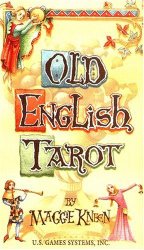
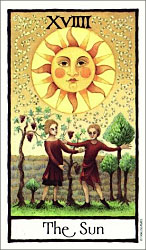
|
Other cool decks:
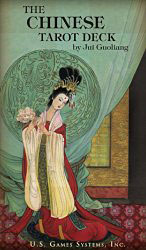
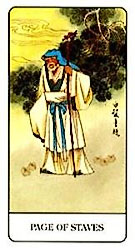
|
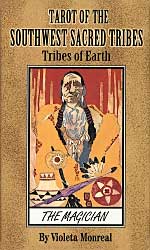
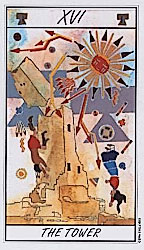
|
||
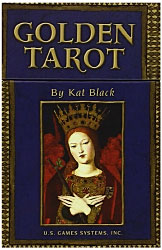
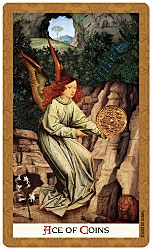
|
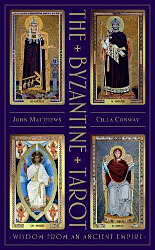
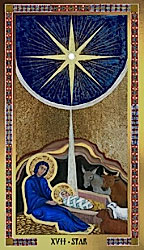
|
||
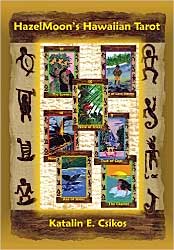
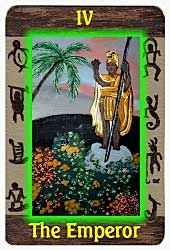
|
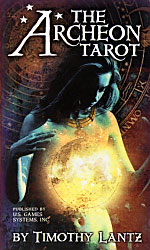
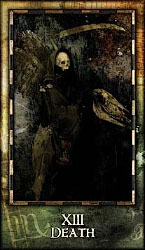
|
||
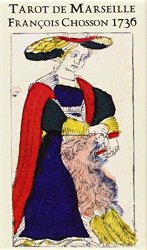
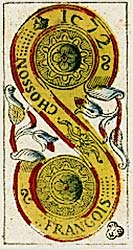
|
|
||
A nihilist deck.